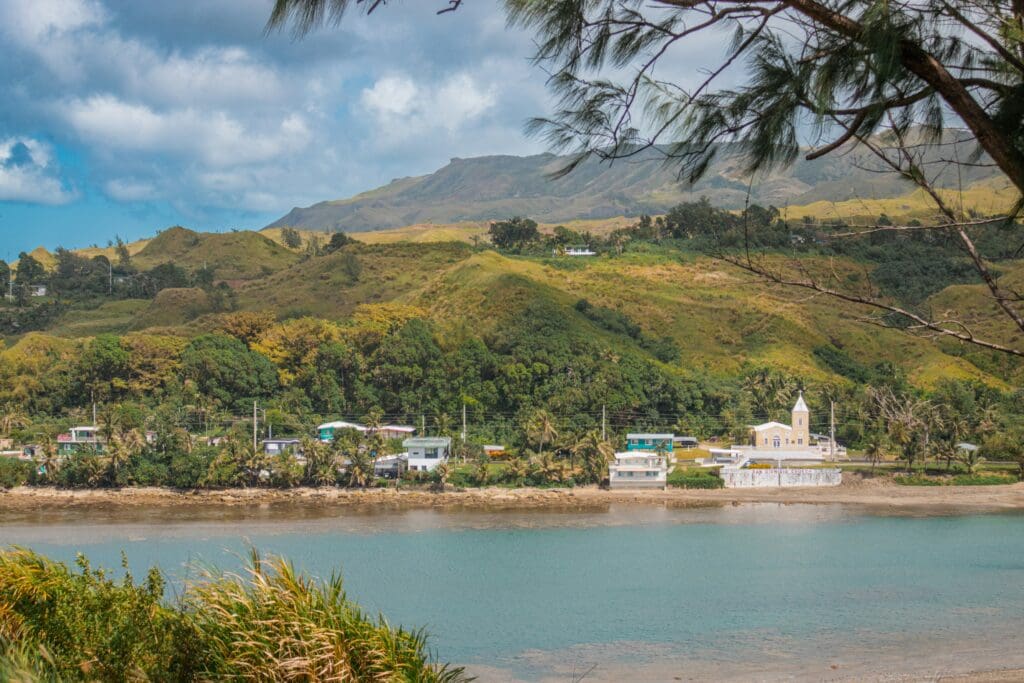An introduction to identity, traditions, and values that shape life on Guam.

Håfa Adai!
If you’ve ever wondered what makes Guam truly special, it’s not just our pristine beaches or year-round sunshine. It’s the heart of the island, our vibrant CHamoru culture, which has endured for generations with strength, warmth, and pride.
As someone born and raised on this beautiful island, I’m excited to share an insider’s perspective on what makes our way of life so unique, meaningful, and worth preserving.
Whether you’re new to Guam or rediscovering your roots, here’s a guide to what makes Guam culture so special, from the traditions and language to the flavors and values that keep our island spirit thriving.
What Does “CHamoru” Mean?
“CHamoru” refers to the Indigenous people of the Mariana Islands, including Guam, as well as the native language and cultural identity that has been passed down for thousands of years.
Quick fun fact: CHamoru is spelled with a capital “CH” to reflect its correct pronunciation. There is no standalone letter C in the CHamoru alphabet, only the combined sound CH.
Respect Is the Foundation
Respect is at the core of CHamoru life. It’s felt in how we greet elders, with a kiss on the cheek or an amen, how we serve guests before ourselves, and how we never show up anywhere empty handed. Respect isn’t just taught, it’s lived.
Core Values That Shape Daily Life
At the heart of CHamoru culture are values that guide how we treat each other and live in community:
- Inafa’maolek – “To make things good for each other.” It’s a guiding principle of harmony, cooperation, and mutual care.
- Respect for elders (manåmko’) – Shown through deference, hospitality, and honoring their wisdom.
- Family first – Whether by blood, marriage, or chosen ties, familia is everything.
- Generosity – Guests are always fed, and our doors are always open.
- Spirituality – Faith is both personal and shared. Rosaries, novenas, and church gatherings help weave spiritual life into the everyday.
Traditions That Still Live Today
CHamoru culture is deeply rooted in tradition, some customs have evolved, but the heart remains:
- Greeting elders with fanginge’ (placing your nose to the back of their hand)
- Singing hymns in CHamoru during religious events
- Cooking and sharing kelaguen, kadon pika, titiyas, and red rice
- Celebrating fiestas where villages open their homes to feed and connect with hundreds of guests
- Telling stories about creation, resilience, and survival, passed down through generations
Fiestas: Where Culture Comes to Life
If you want to see CHamoru culture in full color, attend a fiesta.
Roast pig (lechon), chicken kelaguen, lumpia, red rice: it’s a feast that overflows, not just with food but with love. These celebrations often honor patron saints and blend Catholic traditions with Indigenous hospitality. Everyone is welcome, and no one leaves hungry.
Language: A Living Connection
While English is widely spoken, the CHamoru language is experiencing a beautiful revival, especially among younger generations. You’ll hear phrases like:
- Håfa Adai – Hello
- Si Yu’os Ma’åse’ – Thank you
- Mangge! – Delicious
- Biba! – Hooray or Long live
Learning a few words is one of the simplest and most heartfelt ways to show your love for the island.
Village Pride Runs Deep
Guam is made up of villages, each with its own personality, history, and patron saint. People often introduce themselves by their village: “I’m from Inalåhan” or “Where’s your family from?” It’s a way of staying grounded in lineage, legacy, and community pride.
And if you’re from the south (especially Inalåhan 😉), you already know just how special your village is.
We Celebrate Everything (Loudly)
Weddings, baptisms, birthdays, graduations, retirements: you name it. CHamorus love to gather. Celebrations are big, joyful, and filled with music, laughter, dancing, and more food than you thought possible. There’s always room at the table and someone ready to welcome you like family.
Faith and Family Are Non-Negotiables
Centuries of Spanish influence mean Catholicism is a major part of life on Guam. But CHamoru spirituality runs deeper than religion, it’s about reverence for ancestors, gratitude, and caring for one another. Family isn’t just part of life, it is life. Decisions are made together and elders are deeply respected and cared for.
Respecting the Land and Ancestors
There is a quiet reverence that many locals still hold for the land. Whether it’s asking permission before entering the jungle, being respectful near latte stones, or remembering the taotaomo’na (ancestral spirits), there’s an understanding that we walk on sacred ground and that our ancestors are never far.
So, What Makes Guam Culture So Special?
It’s not just one thing. It’s the warm hug you didn’t know you needed. It’s the plate of food served before you even sit down. It’s the fierce loyalty to family, the soft flow of language, and the joy of simply being together.
CHamoru culture isn’t just something you witness, it’s something you feel. And if your heart is open, it just might stay with you wherever you go.
A Culture That Welcomes and Evolves
Today’s CHamoru identity is proud, resilient, and always evolving. Whether you’re Indigenous, part of the diaspora, or someone who simply loves Guam, there’s room for you here.
Want to learn more?
Stick around for more stories about village life, local customs, and the everyday beauty of Guam’s people and places. Because here at There’s No Place Like Guam, we believe that understanding culture starts with the people who live it.
Biba CHamoru! Biba Guåhan!